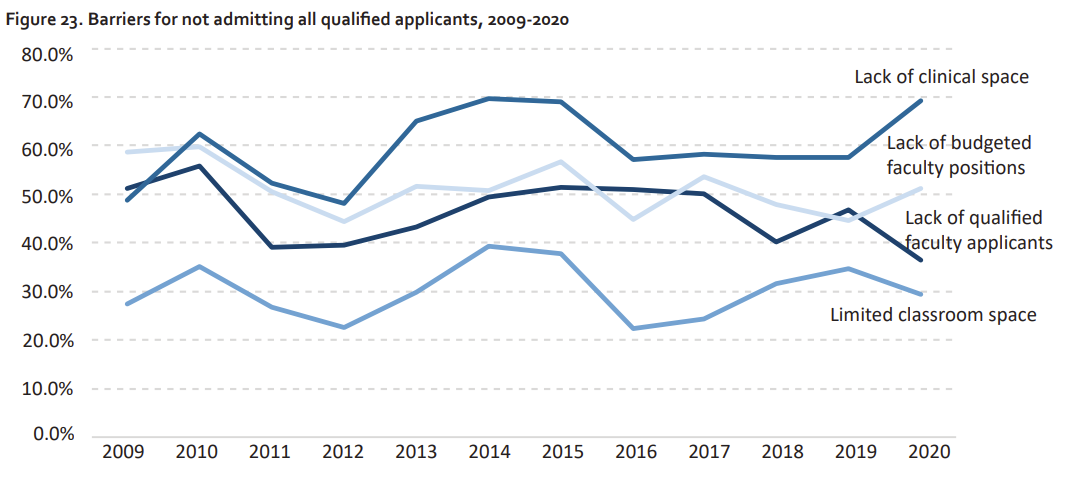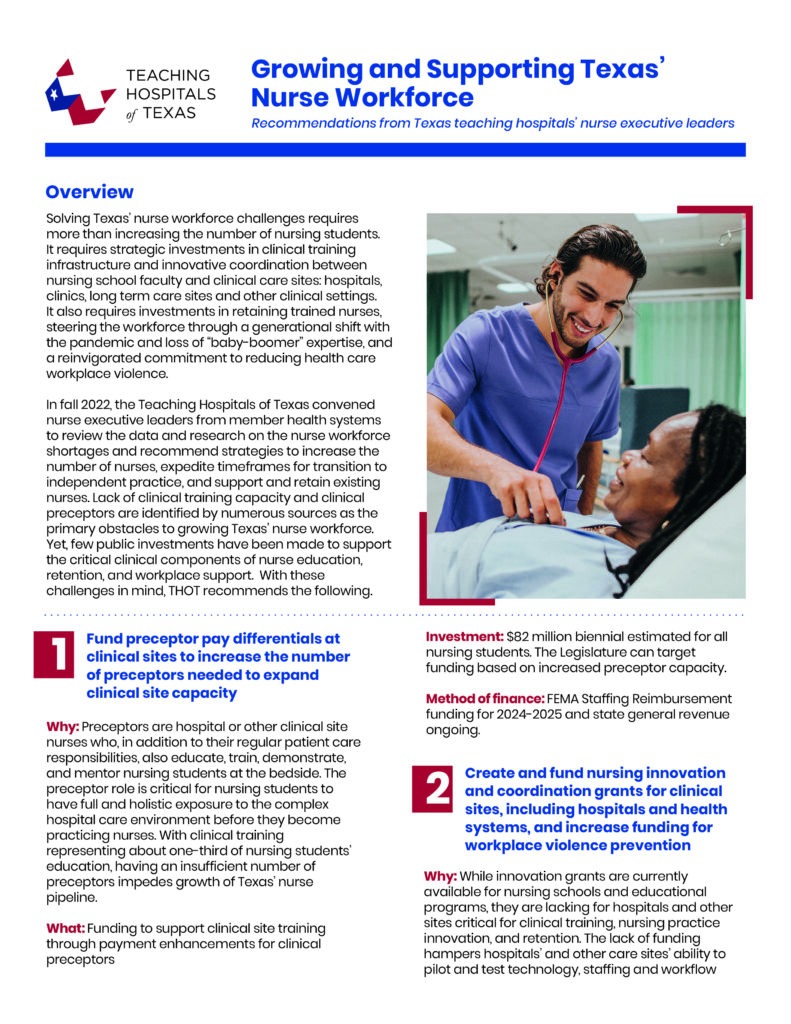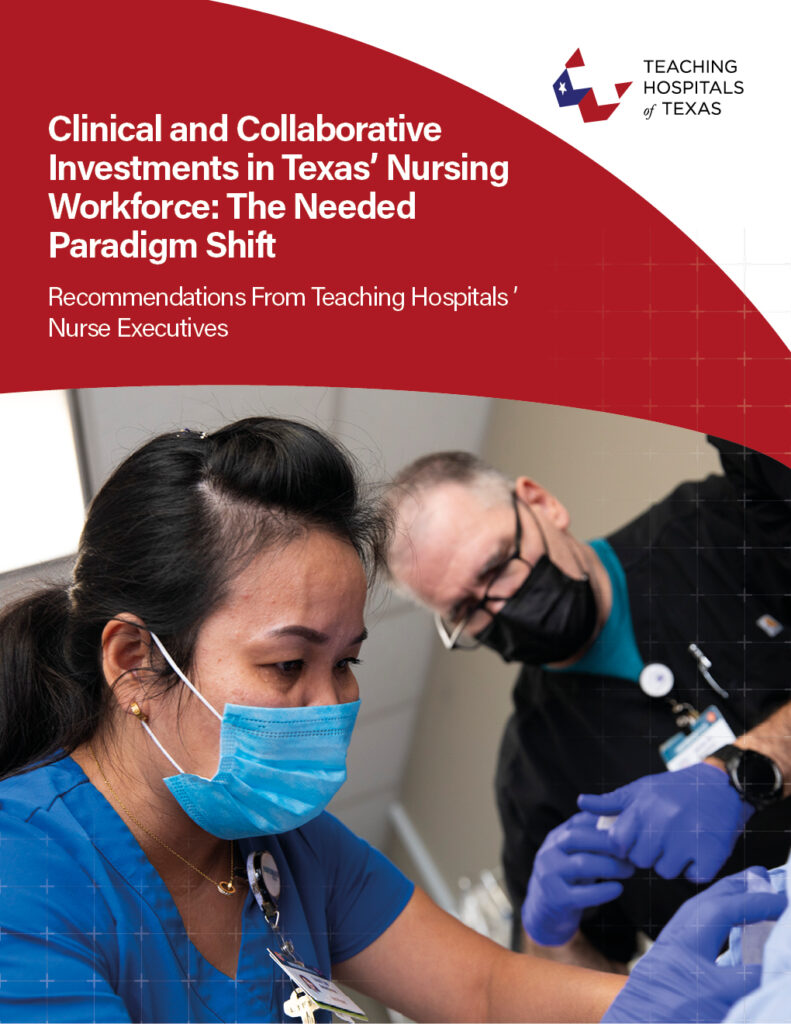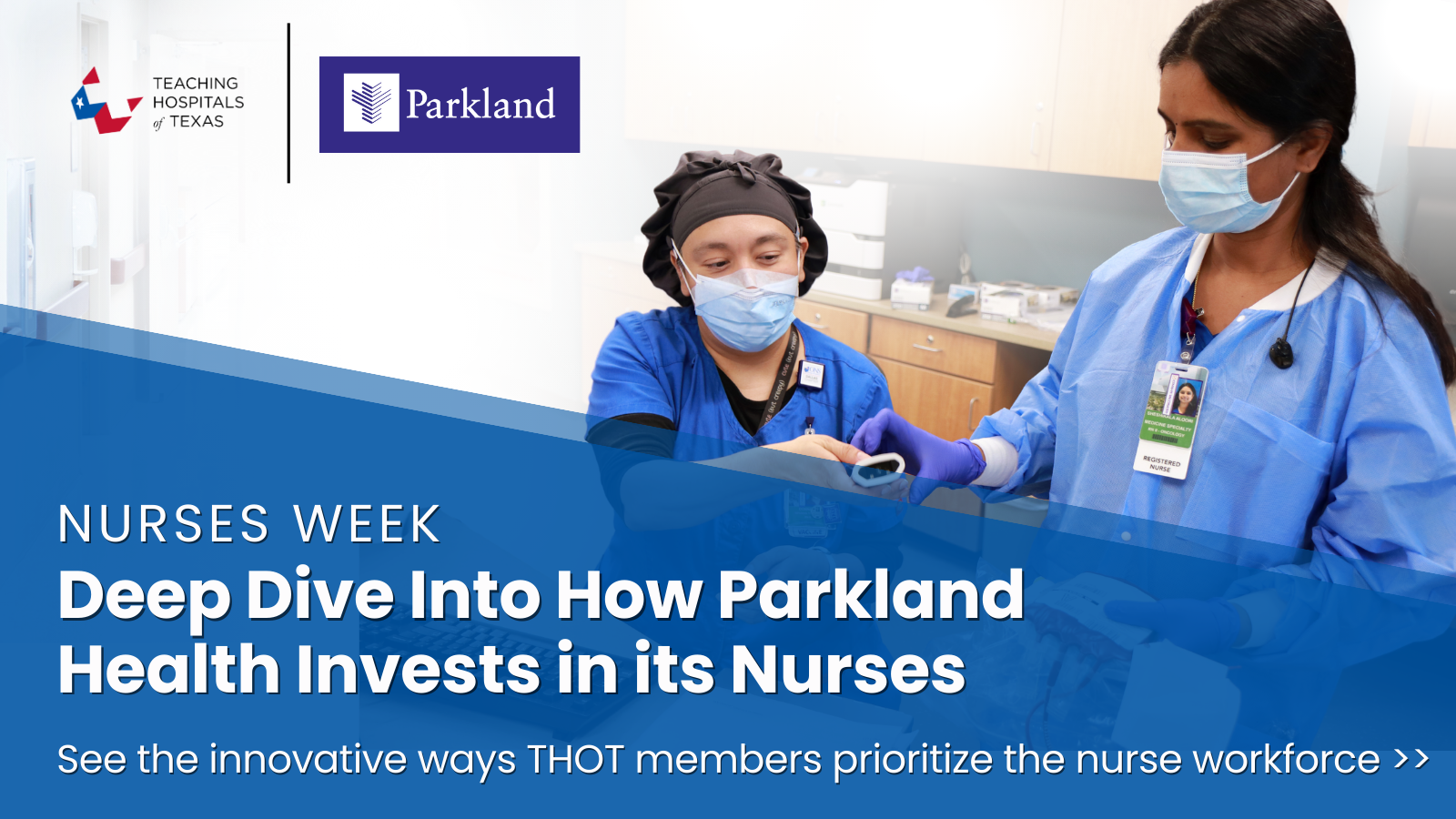Texas has a shortage of healthcare providers including physicians and nurses and is projected to have an ongoing shortage in the future. To increase the number of providers, Texas needs to both train more providers and support and retain our current healthcare providers.
Teaching Hospitals of Texas members have stepped up and historically funded training programs and partnerships in their communities and at their facilities and partnered with medical, nursing, allied health, pharmacy and other schools to grow new providers. At the same time, our members are innovating and focusing on how to support our current healthcare providers so they will stay in the field and continue to provide care.
Graduate Medical Education (GME)
While Medicare funds some of the costs of GME, it uses an outdated formula that funds only a share of costs for residencies that existed over 25 years ago (1996), leaving over half of THOT member hospitals’ historic GME positions unfunded.
Texas funds public medical schools and faculty but does not provide similar dedicated funding for GME programs. Hospitals provide the primary site for GME clinical training – but receive limited funding through a variety of different programs. The Legislature took a big step supported by THOT to help fund some residencies by creating a series of grant programs to support new GME positions and programs (residencies) and increasing grant funding over time.
Nurse Training
Texas nursing students receive classroom training through community colleges and universities, but also depend on clinical training, largely in hospitals, to graduate and learn how to provide direct patient care. Even though nursing school faculty identify a lack of clinical training resources as the primary obstacle to accepting more nursing students, Texas fails directly to support the clinical site training required for nurse education, graduation, and preparation for a successful nursing career. THOT was successful during the 88th Regular Legislative Session in getting legislation passed to support clinical sites however, funding was not provided. We will continue to work to educate on the importance of clinical site support for Texas’ workforce.
Latest Topics
Strategies for Supporting the Nurse Workforce: Results From a National Survey How Parkland Health Puts These Strategies Into Action
A recent national survey of nurses identified three key opportunities for hospitals [...]
Teaching Hospitals of Texas Applauds Governor Abbott’s Direction to THECB to Create Task Force Focused on Healthcare Workforce Shortages
With direction from Governor Greg Abbott, the Texas Higher Education Coordinating Board’s [...]
Nurse Leaders From THOT Member Hospitals Appointed to State Advisory Committee on Nursing Workforce Shortage
Nurse leaders from the University of Texas at Tyler and Harris Health [...]







